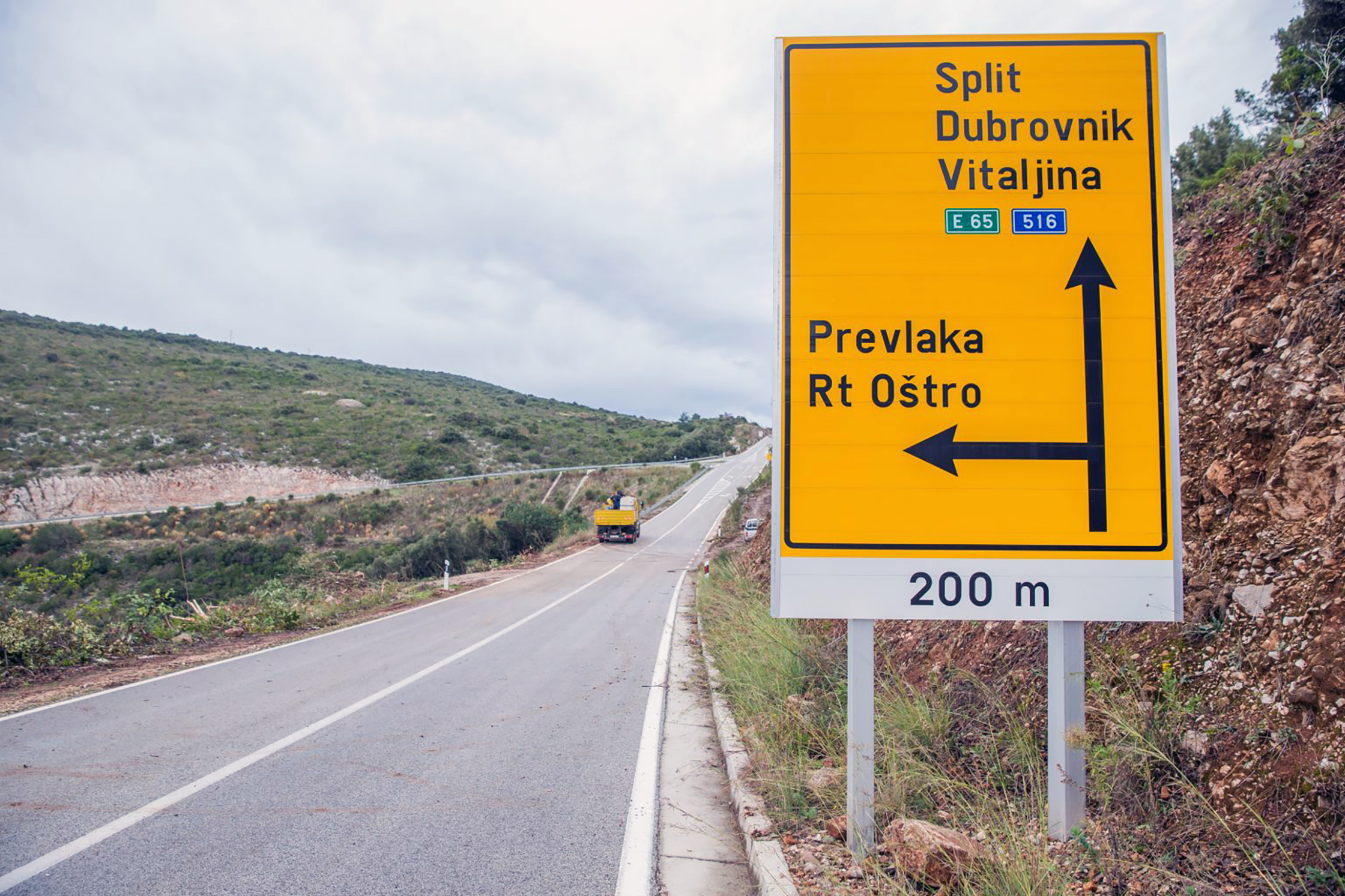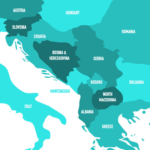Prevlaka is a peninsula at the entrance to the Bay of Kotor. The 2.6-kilometer-long piece of land is only 500 meters wide at its widest part. Peninsula and the surrounding sea, despite its modest size, is the subject of a long-standing territorial dispute.
During the breakup of Yugoslavia, Prevlaka, located near Dubrovnik, became a battlefield between Yugoslav-Serbian-Montenegrin and Croatian forces. No sound of guns, peace has reigned in the region for almost 30 years, but the conflict has not been finally resolved and turned into a peaceful dispute at the diplomatic level.
23 years ago, the Government of the Republic of Croatia and the former Federal Republic of Yugoslavia signed a Protocol on the Interim Regime along the Southern Border between the Two States. This is the temporary document, aimed the parties to seek a more permanent solution. But the border issue, now between Croatia and Montenegro, still remains open.
The key disagreement is that Zagreb considers the land border issue resolved, and insists on a purely technical definition of the border line on the ground. There is no unanimity in Podgorica on this issue – some Montenegrin politicians question the existing border line.
However, possible hydrocarbon deposits in the area complicates the solution of the sea border issue.
Croatia, as a member state of the European Union, has leverage over Montenegro, which was perfectly seen in December last year. At that time, Zagreb slowed down Podgorica’s European integration path by blocking the closure of one of the negotiation chapters. There were several reasons for this, including the unresolved border issue at Prevlaka.
History of the conflict
A year after the end of the Croatian Homeland War (Domovinski rat), in September 1996, a Treaty on the Normalization of Relations was signed between Croatia and the Federal Republic of Yugoslavia. According to the Article 1 of the document, “The Parties respect independence, sovereignty of each other as equal states within their international borders”.
Negotiations on Prevlaka began in 1998. However, NATO’s operation against the Federal Republic of Yugoslavia in 1999 put the dialogue on hold.
Negotiations between Zagreb and Belgrade continued in 2000. In 2001, a Joint Interstate Diplomatic Commission was formed to resolve unresolved border disputes between Croatia and the FRY.
On 10 December 2002, the parties signed the Protocol between the Federal Government of the Federal Republic of Yugoslavia and the Government of the Republic of Croatia on the Interim Regime along the Southern Border between the Two States, which established a temporary cross-border regime on the Prevlaka peninsula.
The land border, in fact, repeated the administrative border between the former republics of the Socialist Federal Republic of Yugoslavia (the uti possidetis principle), unlike the sea border, since there were no sea borders within the SFRY.
According to the Protocol, Croatia received the mainland part of the peninsula with a limited sea strip of the entrance to the Bay of Kotor. Part of the sea along the coast, closer to the Montenegrin Igalo, was declared a neutral zone.
On 21 May 2006, Montenegro gained independence, at the same time inheriting a dispute over its border from the times of the common state with Serbia. From the very beginning, the country supported peaceful settlement of existing territorial disputes. Despite this, Podgorica did not abandon its claims to the peninsula and was not ready to make concessions regarding the maritime border either.
In 2008, a meeting of the prime ministers of Croatia and Montenegro was held. The then heads of government – Ivo Sanader and Milo Đukanović – reached an agreement on joint efforts to resolve the conflict around the Prevlaka peninsula. During the meeting in Zagreb, it was agreed that the UN International Court of Justice in The Hague would be involved in the dialogue. The then leaders of the Croatian and Montenegrin Republics expressed the hope that the court’s decision would replace the framework of the Protocol on the Interim Regime, and would also be fair and contribute to further improvement of relations between Croatia and Montenegro.
In 2009, Croatia joined NATO.
In March 2013, the then Montenegrin Foreign Minister Igor Lukšić stated that intergovernmental commissions on a lasting agreement in Prevlaka would be established, and that Podgorica and Zagreb would be better off dealing with the issue on their own.
In July 2013, Croatia became a member of the European Union.
In 2015, Montenegro joined NATO.
In 2016, the then Montenegrin Prime Minister Milo Đukanović again called for international mediation and the court hearings of the Prevlaka issue. Official Zagreb planned to resolve the dispute between the two states by negotiating. But since then (for about 10 years) the intergovernmental commission on Prevlaka has not met.
There was a change of government in Montenegro in 2020. For the first time since the early 1990s, Milo Đukanović’s Democratic Party of Socialists (DPS) found itself in opposition. In 2021, it was planned to establish a new commission on border issues. The Ministers of Foreign Affairs of Croatia and Montenegro, Gordan Grlić Radman, and Đorđe Radulović, who was then the Minister of Foreign Affairs, announced their intention to intensify cooperation in this area.
The border issue was discussed at a meeting of the Presidents of Croatia and Montenegro, Zoran Milanović and Jakov Milatović, on September 4, 2023, in Zagreb, but no breakthrough occurred.
As a result, despite numerous statements of readiness to resolve the dispute that were made by both sides all those years, no effective decisions were made.
Thoughts aloud
In April 2021, then-Prime Minister Zdravko Krivokapić (leader of the pro-Serb political force that won the elections) revealed insights about the negotiations: “I will not violate the obligation to protect classified data if to tell you that with the consent of the parties, the closed-door talks have shown considerable mutual disagreements, primarily in the interpretation and definition of the subject of the territorial dispute. The Republic of Croatia believes that the 2002 Protocol only allows for the demarcation of maritime borders and that the existing provisional demarcation of the mainland is not subject to negotiation, while Montenegro believes that both the land and maritime borders are subject to dispute. Perhaps these disagreements are the reason of failed attempts to achieve a demarcation.”
Miodrag Lekić, one of the veterans of Yugoslav-Montenegrin diplomacy and the politician, who participated in the negotiations on Prevlaka in 1992-1994, is convinced that the protocol signed in 2002 between the then Federal Government and Croatia does not help to resolve the border issue between Montenegro and Croatia, including on land.
If Montenegro finally loses Prevlaka, the Bay of Kotor will become a joint bay with joint rights, “it will be a state defeat for Montenegro,” Lekić said, speaking on Montenegrin state TV in late January. In his opinion, Montenegro has the right to consider Prevlaka as its territory due to the so-called “natural” or “historical” borders.
In a column published by the most popular Montenegrin Vijesti on the last day of 2024, Lekić writes: “We believe … that the bay belongs to one owner. In fact, the way it has always been in the history of the Adriatic Sea, and the history of Boka itself (Bay of Kotor)… At the time of Venice and Austria, which dominated the Adriatic coast for the longest time… the situation around Prevalaka was clear. Whoever held Boka Kotorska also held Prevlaka as an integral part of the Bay of Kotor.”
A few days after Lekić’s publication, Vijesti published Professor Časlav Pejović’s response, an emeritus professor at the Faculty of Law of Kyushu University (Japan).
“Lekić refers to natural borders, claiming that bays can have only one owner. This is not true,” says Časlav Pejovec, recalling the Piran Bay, which is divided between Slovenia and Croatia (a separate interesting case of a border dispute in the former Yugoslavia).
The professor considers appeals to history not only meaningless from the point of view of international law, but also dangerous. “The mention of historical borders is gunpowder that is easy to ignite. Especially in the Balkans,” he notes.
“Talking about natural and historical borders and an indirect proposal to change borders unnecessarily increase tension,” writes Časlav Pejovec, noting that “this should be especially avoided at this sensitive moment, when relations with Croatia are spoiled and Montenegro is in the waiting room of the European Union.”
An obstacle to the EU integration
In its resolution of March 2015 on the 2014 Progress Report on Montenegro, the European Parliament called on the Montenegrin authorities to swiftly resolve the border issue with the Republic of Croatia by mutual agreement, and in case of failure, to resolve the dispute in the UN International Court of Justice in The Hague, according to the norms and principles of international law.
In 2018, the European Commission adopted a strategy for “A credible enlargement perspective for and enhanced EU engagement with the Western Balkans”, reaffirming the European future of the region. According to the document, all Western Balkan countries should resolve their bilateral border disputes.
In September 2023, European Commission spokesperson Ana Pisonero, commenting on the situation around Prevlaka, stated that bilateral disputes should not “impede the accession process” and that the parties should resolve them before joining the European Union.
In 2024, the unresolved border issue became one of the reasons for the first tangible obstacle on Montenegro’s path to the EU. Last December, Croatia blocked Montenegro’s one negotiation Chapter 31 on foreign policy, security, defense, and good-neighborly relations. Zagreb made a number of claims to Podgorica, in particular, regarding the lack of a decision on border demarcation in the Prevlaka area.
On January 13, 2025, a meeting of the Foreign Ministers of Montenegro and Croatia took place. Following the talks, it was announced that the two states would begin consultations on “open issues”, including on Prevlaka.
Commenting on the meeting, Croatian Minister Grlić Radman reiterated that the land border at Prevlaka was beyond doubt, but the issue of the sea border would be resolved on a bilateral basis.
Montenegrin officials have expressed their readiness for negotiations and have shown optimism, but without specifics.
On January 27, bilateral consultations were held in Zagreb between Croatia and Montenegro under the leadership of the State Secretaries of the Ministries of Foreign Affairs on “open issues” (including, apparently, Prevlaka). The parties “expressed their readiness for an open and active dialogue.”
This is not the first attempt to reach an agreement since the signing of the Protocol on the Interim Regime 23 years ago. However, given Montenegro’s repeatedly stated intention to join the EU no later than in three years, there is a real chance to resolve a “ghost issue from the ’90s”.


